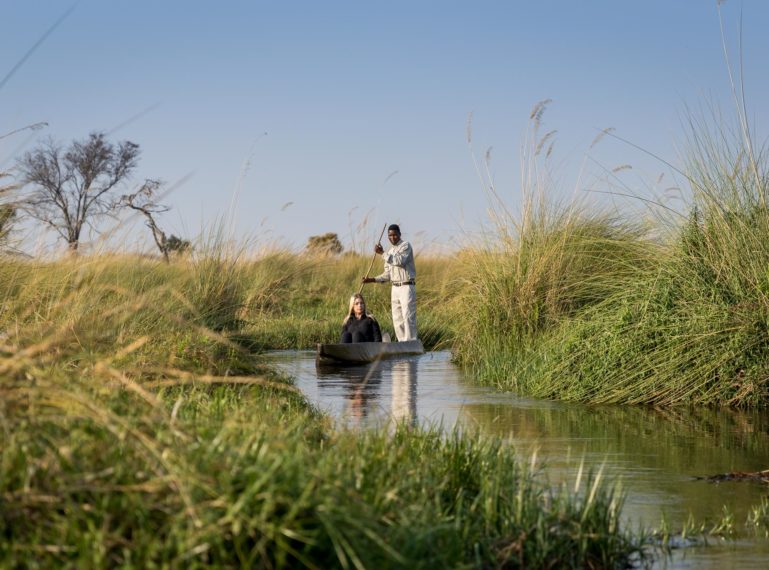
An Okavango Delta safari isn’t complete without at least one guided mokoro safari experience. It’s an unforgettable, iconic, and authentic activity that is also eco-friendly. What better way to navigate the narrow, papyrus-lined channels and search for wildlife hidden in the reeds than by being so close to the water’s surface? The best part is that you don’t have to do anything yourself—no paddling, steering, or using oars. Instead, an experienced poler stands on a small canoe-shaped vessel and skillfully glides through the waters using a pole. For the ultimate mokoro safari that complements the authentic Delta atmosphere, choose Mboma Island Expeditions. Simply put, Mboma is magical!
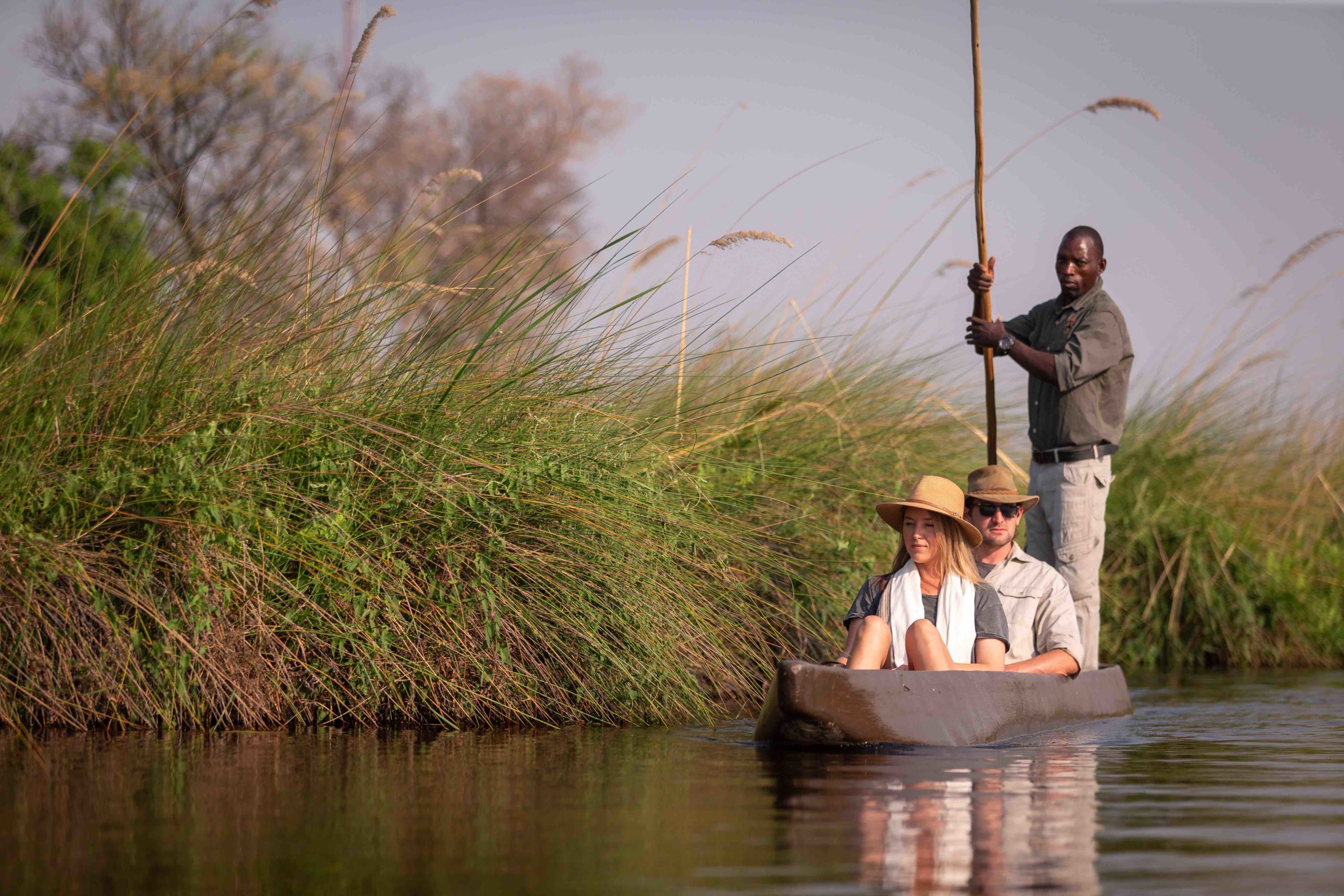 So, just what is a mokoro?
So, just what is a mokoro?
The mokoro is a slim canoe-like vessel originally hand carved from the trunk of the Kigelia (sausage) tree dotted across the Okavango Delta and its islands. Traditionally, the low-lying mokoro was used as a mode of transport for the local Ngami and the Okavango Delta communities to navigate the mosaic of the Delta’s crystalline channels.
From transporting people and goods to reed harvesting and fishing, the mokoro quickly became the ‘vehicle’ for almost everything. Steering the mokoro works the same way as punting, where the poler stands on the stern and uses a long pole to push against the riverbed to create movement. Spanning centuries of use, the mokoro is deeply rooted and intertwined in the Okavango Delta’s history and its people.
What is a mokoro made of?
For years the canoes were handcarved from the trunks of sturdy hardwood trees. The sausage tree and ebony tree were the top choices because of their abundance, trunk size, and ability to withstand water. In recent times there’s been a shift away from making mokoros out of trees, primarily for practical and environmental reasons. Also, carving a mokoro from scratch is time-consuming and labour intensive. The modern mokoro is constructed from durable fibreglass and other modern materials that require less maintenance than the traditional wooden mokoros. They are less prone to damage from water and wildlife, making them a more practical choice for regular use. The molded fibreglass ones are environmentally friendly, making them a great eco-friendly safari activity option.
Is the mokoro only used in Botswana?
No, the mokoro is not only used in Botswana, although it is most famously associated with the Okavango Delta in Botswana. Typically, you would go to the Okavango Delta in Botswana for a mokoro safari. The mokoro is used by various communities across Southern Africa for transport and tourism, but the design might differe slightly from region to region.
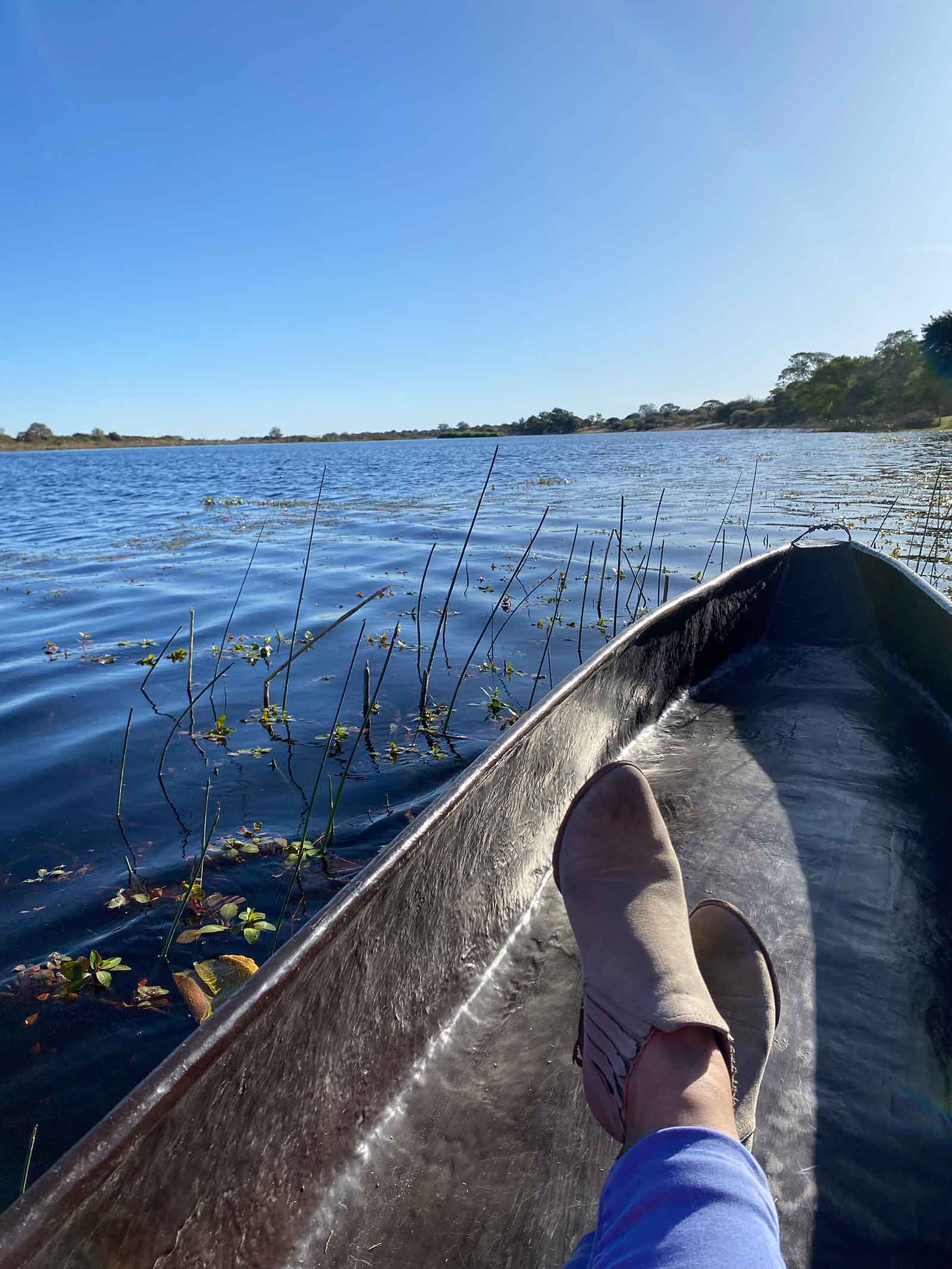 Can you go on the open waters?
Can you go on the open waters?
Mokoros are typically designed for use in shallow, slow-moving waters, such as the narrow channels and wetlands of the Okavango Delta, rather than open waters. Because the mokoro has a shallow draft, it’s designed to float above the water and cannot handle to currents and movement of the open waters.
If you’re interested in exploring the open waters of the Okavango Delta, you should try a boating activity at Mboma Island Expeditions (subject to the water levels being high enough). But overall, the main reason you can’t head out into the open waters is because of the bloats of hippo. The hippo is notorious for its aggression, and can overturn a mokoro in an instant.
What wildlife can I expect to see on a mokoro safari while at Mboma Island Expeditions?
Mokoro safaris provide an opportunity for you to get up close and personal to wildlife hiding out in the tall reeds. Birding is exceptional from a vantage point of the waterways. You’ll notice pied kingfishers, bee eaters, African fish-eagles, yellow-billed storks, African jacana, mallard duck, and a wealth of waterfowl. There are a recorded 400 species of bird in the Delta – and it’s not uncommon to see up to 100 species in a day.
Large mammals and general game that are often seen in the reeds include:
- Elephants in the reeds and the shallows
- The ever shy sitatunga antelope
- Red lechwe
- Waterbuck
- Reedbuck
- Hippo
- Crocodiles
Magical Mboma features five light Meru-style canvas tents, each furnished with twin beds and en suite, open-air bathrooms. The camp is entirely eco-friendly, relying solely on solar power, bucket showers, and chemical toilets. The tents are fully equipped with high-quality linen and all the creature comforts of home. Lantern-lit pathways guide you from the rooms to the main camp.
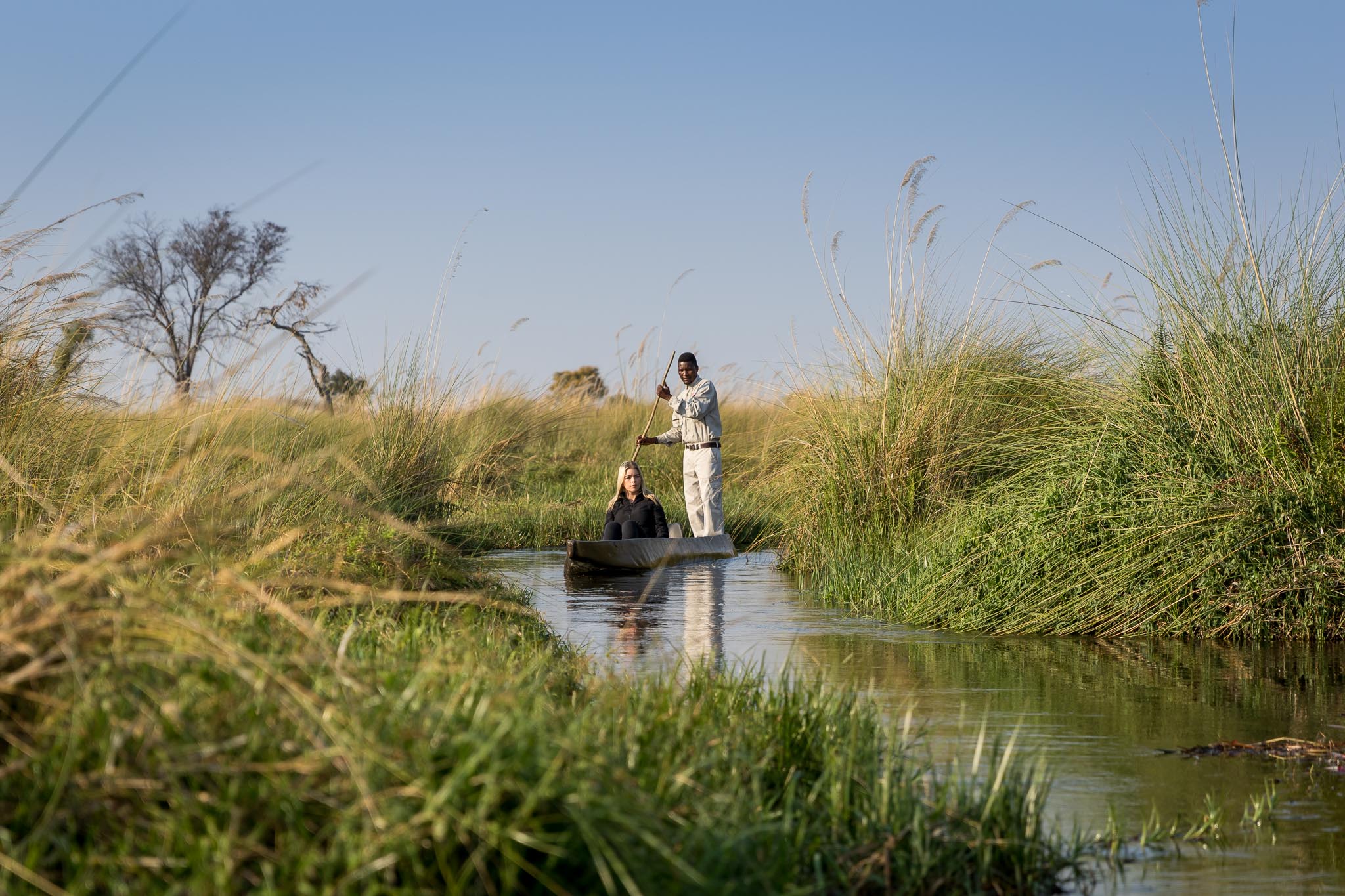
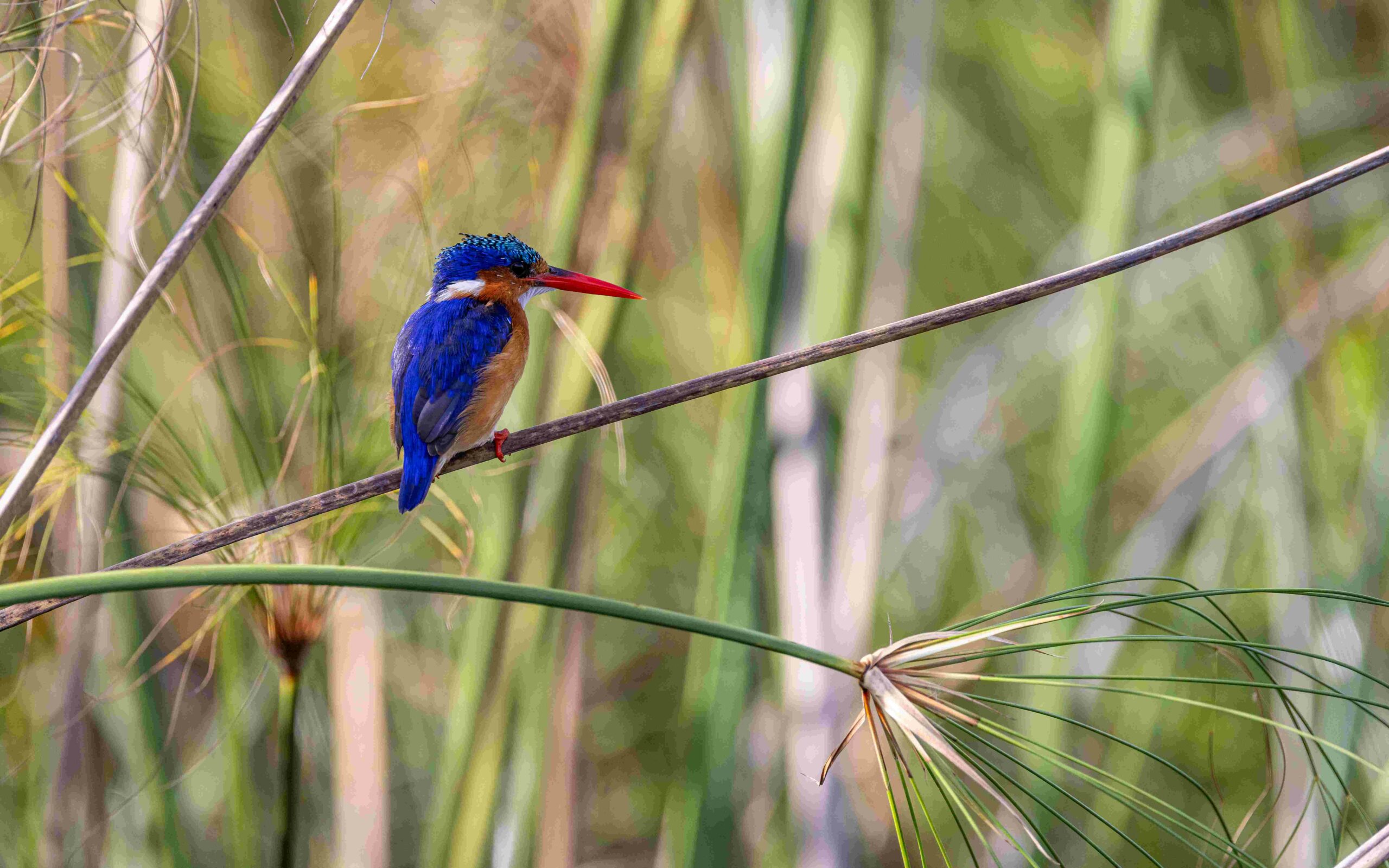
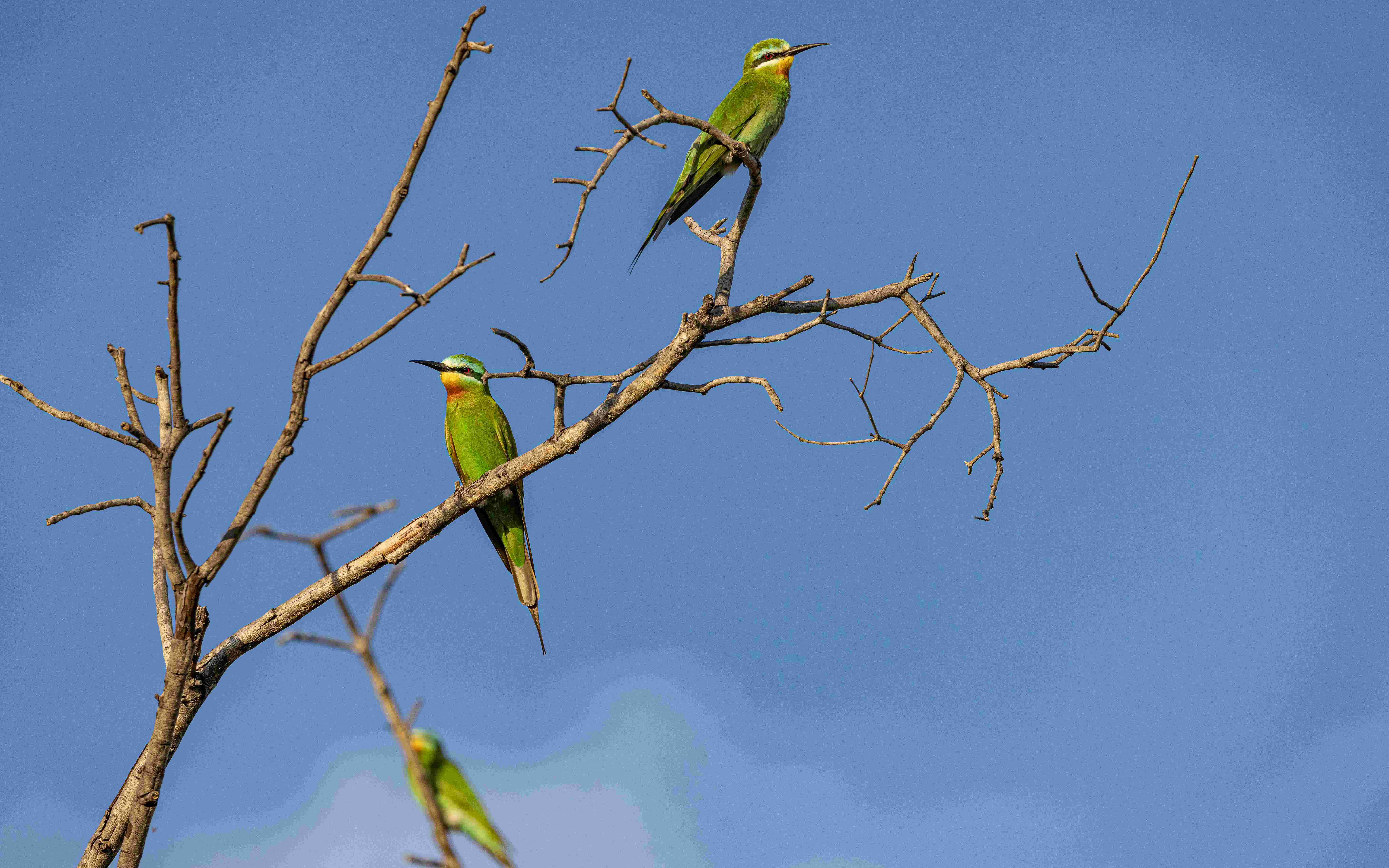
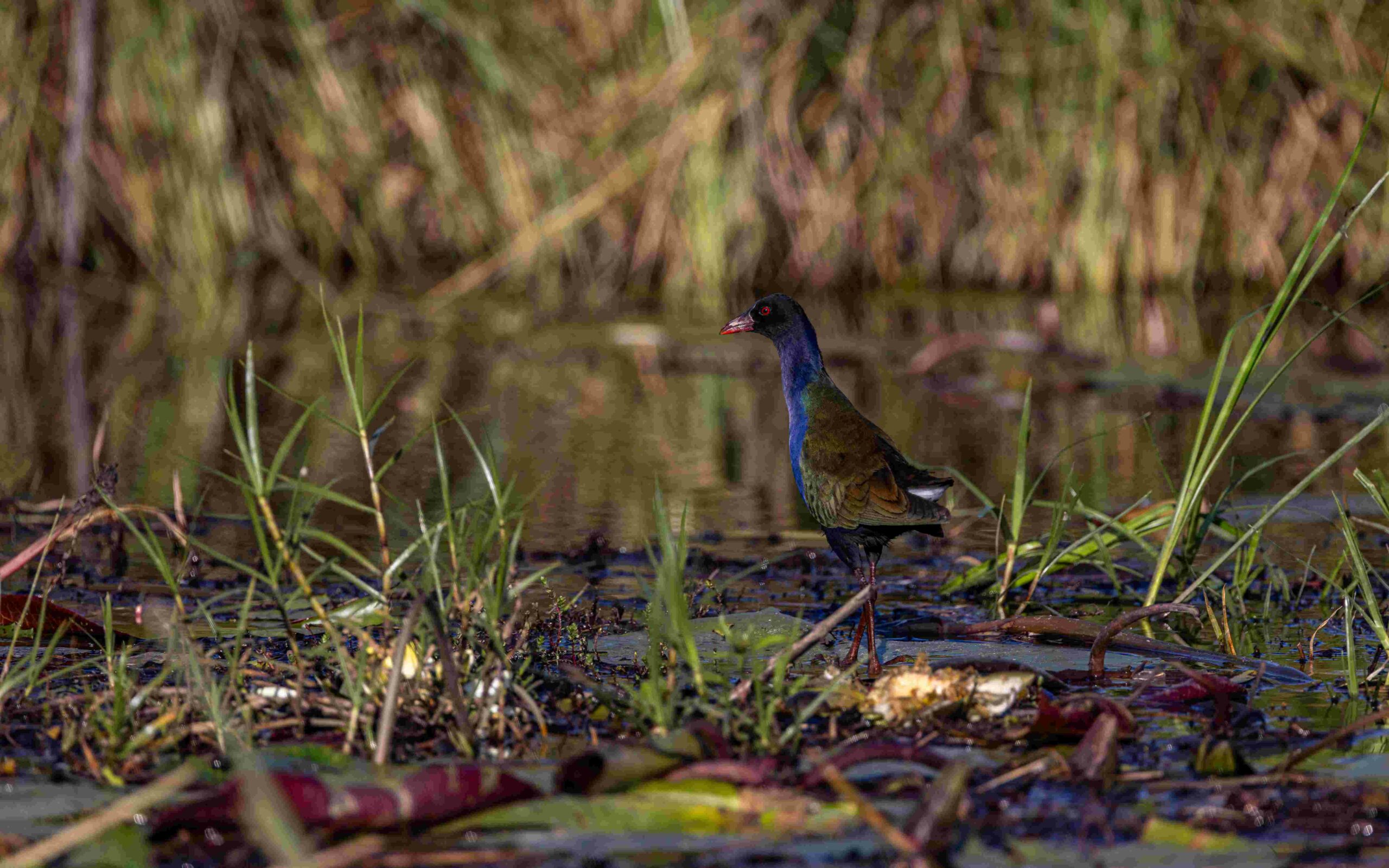
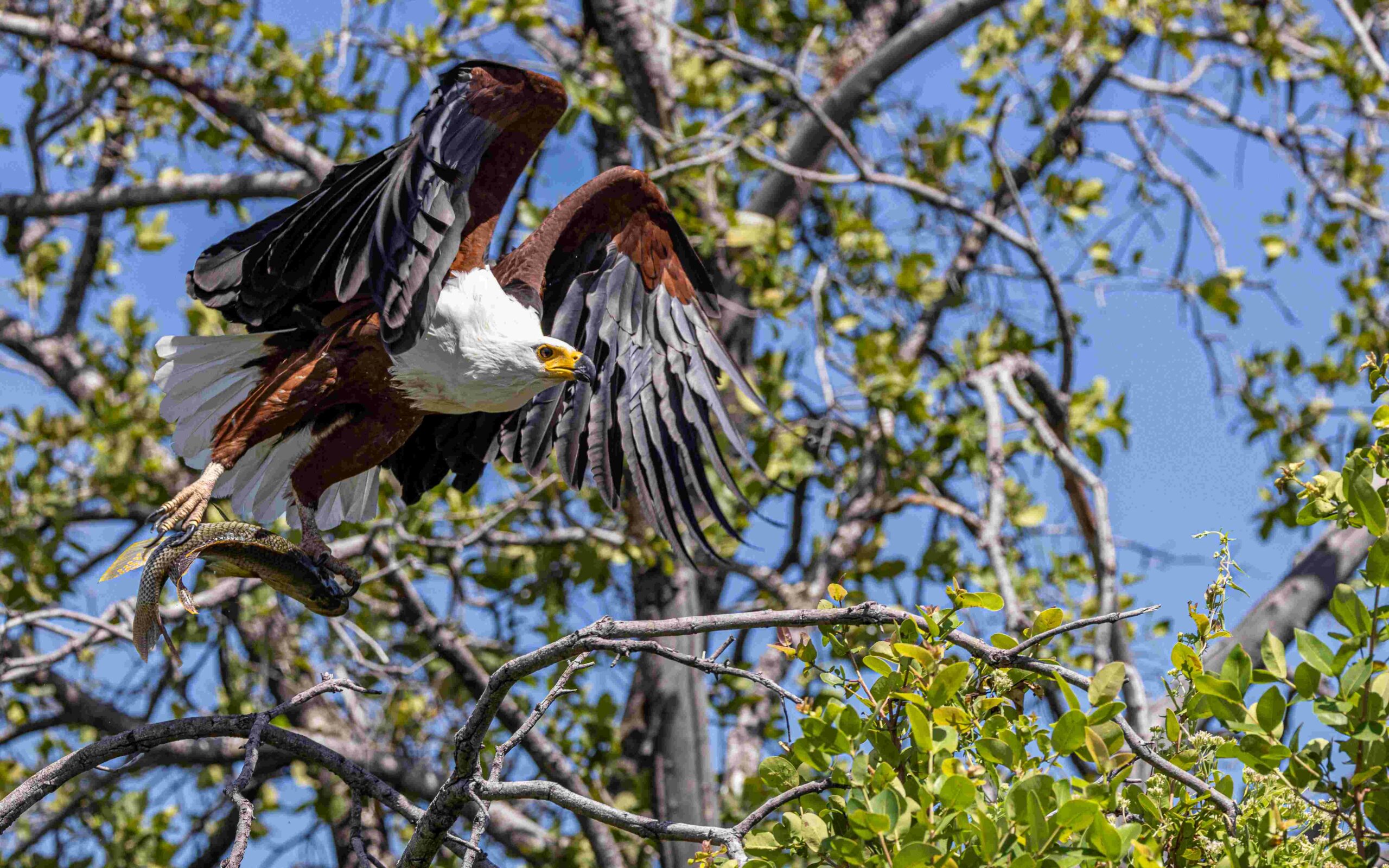
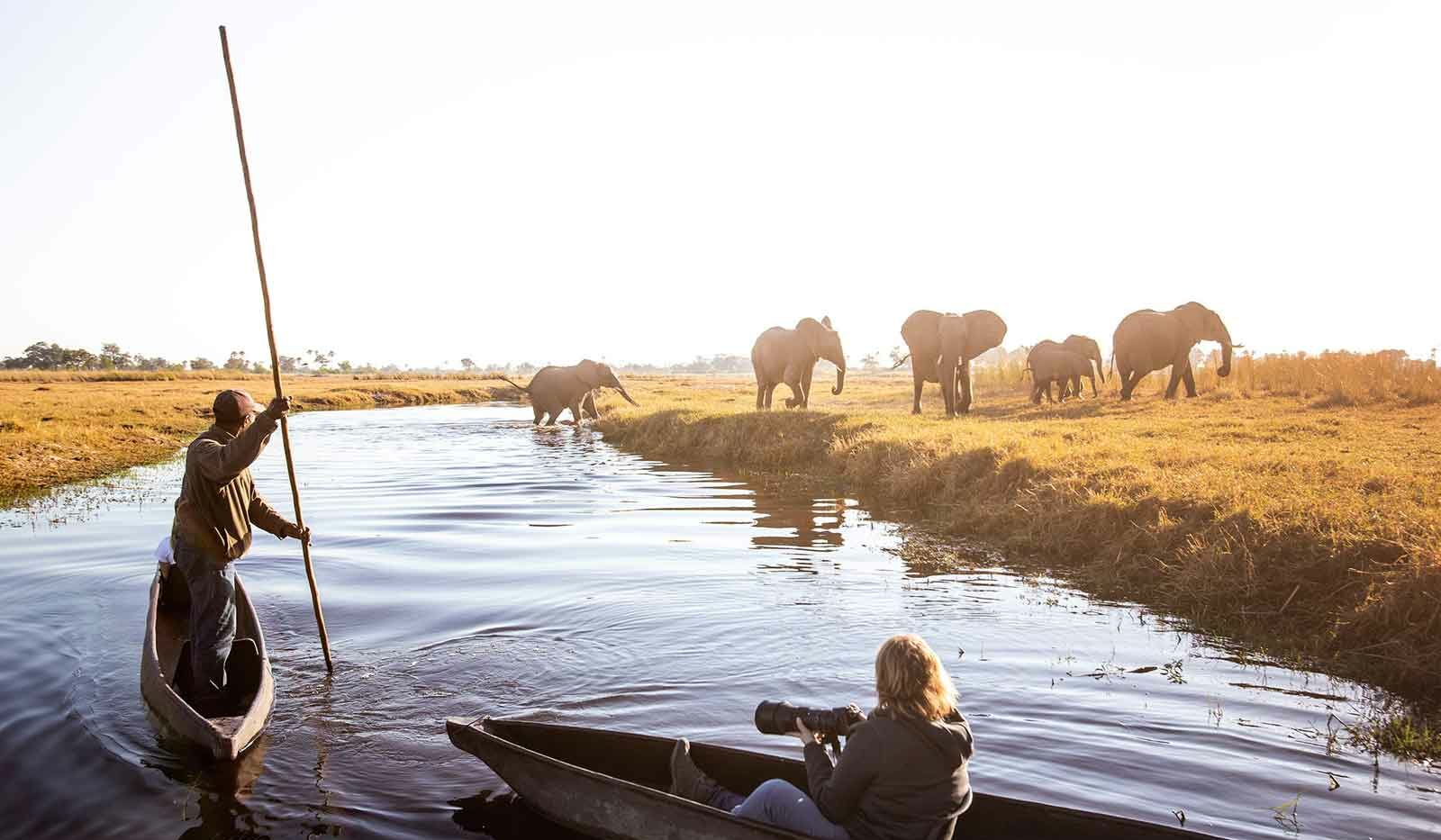
Leave a Comment